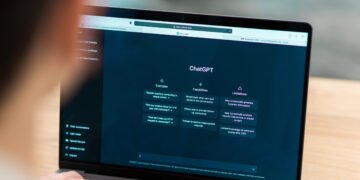Stop Wasting Time: Here’s How to Learn Anything Faster
Let’s face it—some people seem born with photographic memories, breezing through exams, new skills, and training manuals like it’s second nature. But for the rest of us, the learning curve often feels steep and discouraging.
Here’s the good news: you don’t need natural talent to learn anything faster. In fact, research shows that specific learning strategies—not raw intelligence—are what separate top performers from everyone else.
Whether you’re trying to grasp Python, memorize public speaking notes, or finally understand compound interest, these 7 powerful tactics will help you master anything in less time, with less frustration.
Let’s dive in.
1. Use the “Blur-Then-Focus” Method to Prime Your Brain
When we try to absorb new information, most people go deep too fast. Instead, try “blur-then-focus”:
- Step 1: Skim the entire material lightly—headings, summaries, or an overview video.
- Step 2: Once you have the big picture, go back and study key points in detail.
This approach activates your brain’s pattern recognition systems and creates a mental framework. When you later study specifics, your brain already knows where to “file” them.
🔍 Example: If you’re learning Excel macros, first watch a 5-minute summary before tackling the formulas line-by-line.
💡 This method helps you learn anything faster by minimizing mental overload and increasing retention.
2. Teach It to Lock It In: The Feynman Technique

The best test of understanding isn’t remembering—it’s explaining.
The Feynman Technique is simple but brilliant:
- Learn the topic.
- Teach it out loud using basic words—as if to a 12-year-old.
- Identify what you can’t explain.
- Study those parts again.
- Repeat.
When you attempt to teach something, your brain is forced to organize and simplify. This rewires information from short-term to long-term memory.
🎙️ Bonus tip: Record yourself teaching and play it back. You’ll hear your weak spots instantly.
Using this method regularly will help you learn anything faster, especially complex topics.
👉 Read more on the Feynman Technique
3. Break the “Hour Rule” with Micro-Sessions

Old-school study advice tells you to block out long hours for deep learning. The problem? Your brain doesn’t work that way.
Instead, break your learning into short, focused bursts (aka micro-sessions).
🕒 Try this:
- 25 minutes of study
- 5-minute break
- Repeat for 4 cycles, then take a longer 30-minute rest
Known as the Pomodoro Technique, this structure improves focus, avoids burnout, and enhances recall. It’s one of the fastest ways to learn anything faster, especially when juggling other tasks.
⏲️ Free tool: Pomofocus.io
👉 See also: This trick to beat procrastination with time blocks works insanely well
4. Use Spaced Repetition to Strengthen Memory
Spaced repetition is one of the most scientifically validated ways to retain information long-term.
Here’s how it works:
- Review new info after 1 day → 3 days → 7 days → 14 days
- Each review reinforces the neural connections
🧠 Instead of rereading the same thing daily, you strategically revisit it at intervals when you’re just about to forget it. This strengthens memory more than repetition alone.
🎓 Apps like Anki, Brainscape, or RemNote automate this for you.
If you want to learn anything faster and remember it longer, spaced repetition is non-negotiable.
5. Engage Multiple Senses to Supercharge Retention
The more senses you use, the better your brain stores and recalls information.
🧩 Instead of just reading:
- Watch video tutorials
- Speak what you’re learning
- Write key points by hand
- Act it out if applicable
- Draw diagrams or maps
Example: If you’re learning human anatomy, read the chapter, say it aloud, trace the body parts on an app, and sketch a diagram. This multisensory approach helps you learn anything faster by embedding knowledge across multiple brain regions.
📚 Combine passive and active learning for maximum effect.
6. Apply Deliberate Practice for Real Skill Building
Not all practice is equal. Repeating the same task over and over isn’t enough.
Enter deliberate practice—a strategy used by elite athletes, chess masters, and musicians.
Here’s how:
- Break down the skill into sub-skills
- Focus on your weakest areas
- Get feedback (even from yourself)
- Adjust and retry with intent
If you’re learning public speaking, don’t just rehearse your full speech repeatedly. Instead, practice just the intro 10 times. Then your transitions. Then eye contact.
🛠️ You’ll learn anything faster by isolating friction points instead of glossing over them.
7. Create “Mental Anchors” That Stick

Want to memorize anything quickly? Create visual and emotional associations—called anchors.
💭 If you’re trying to learn the word “photosynthesis,” don’t just repeat the term. Instead, imagine sunlight being absorbed like a smoothie into a green leaf blender.
Anchors work because the brain loves stories, emotions, and vivid images.
Examples:
- Use analogies (“RAM is like a desk space”)
- Build stories around dry concepts
- Relate info to your personal experiences
The more you anchor new knowledge, the faster and easier it sticks.
✅ Bonus: Review Right Before Sleep
Studies show that reviewing new material right before you sleep dramatically boosts retention. That’s because your brain consolidates memories during deep sleep cycles.
🛌 Tip: Before bed, skim your handwritten notes or quiz yourself using flashcards.
This technique alone can help you learn anything faster—without extra effort.
🏁 Final Thoughts: Speed Isn’t Magic—It’s Method
Forget the myth that fast learners are just gifted. The truth? They use better strategies.
By applying these 7 powerful tactics consistently, anyone can learn anything faster—even if you’ve struggled in the past.
💬 So, which tactic will you try first?
Try stacking two or three this week and watch your learning speed go from sluggish to sharp.



























